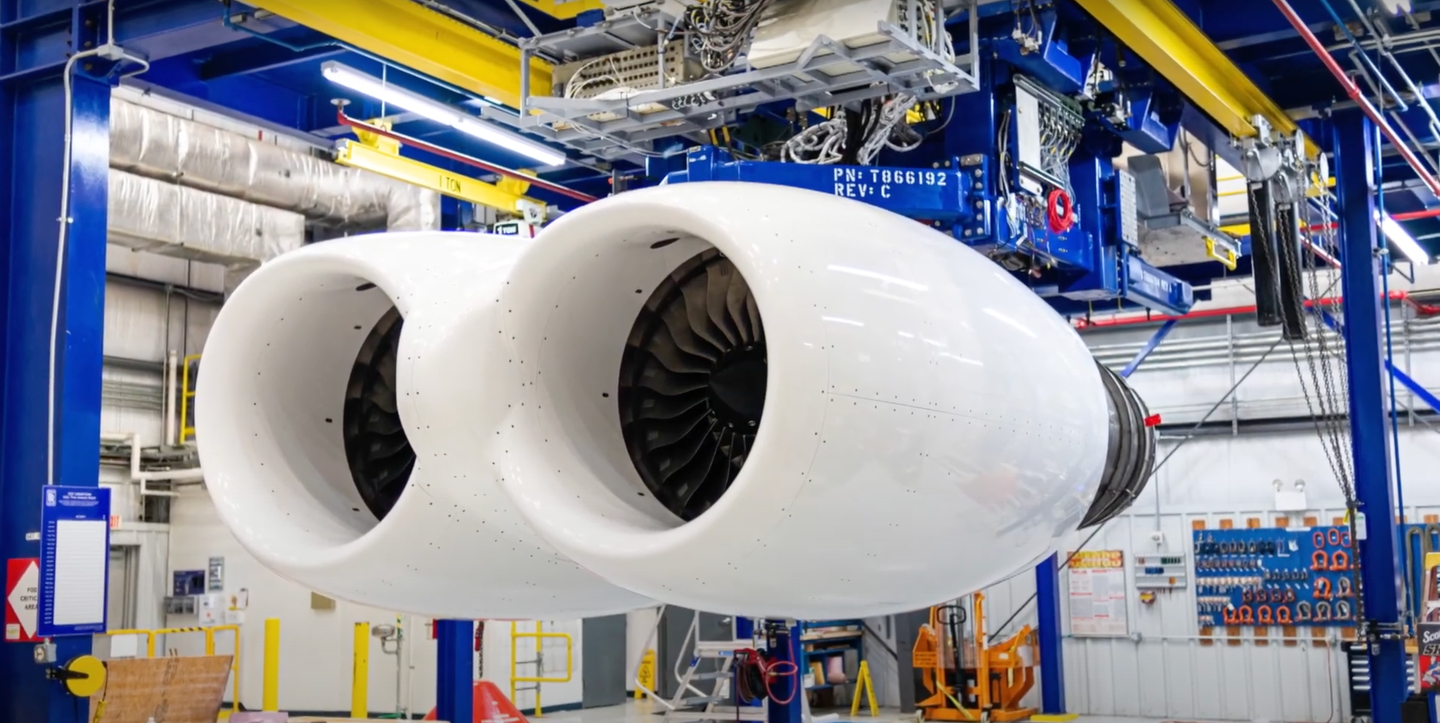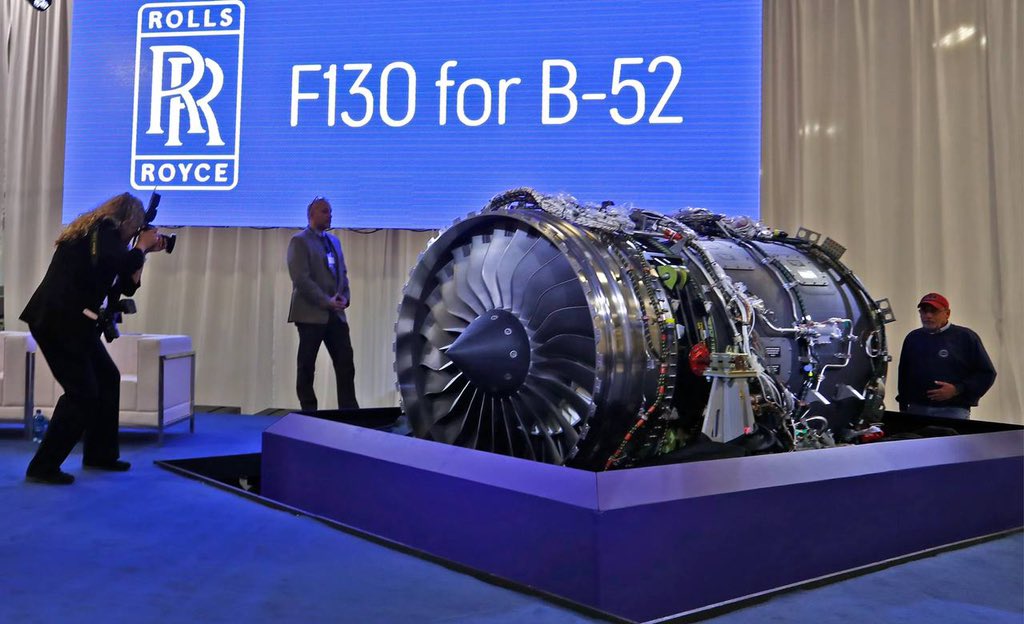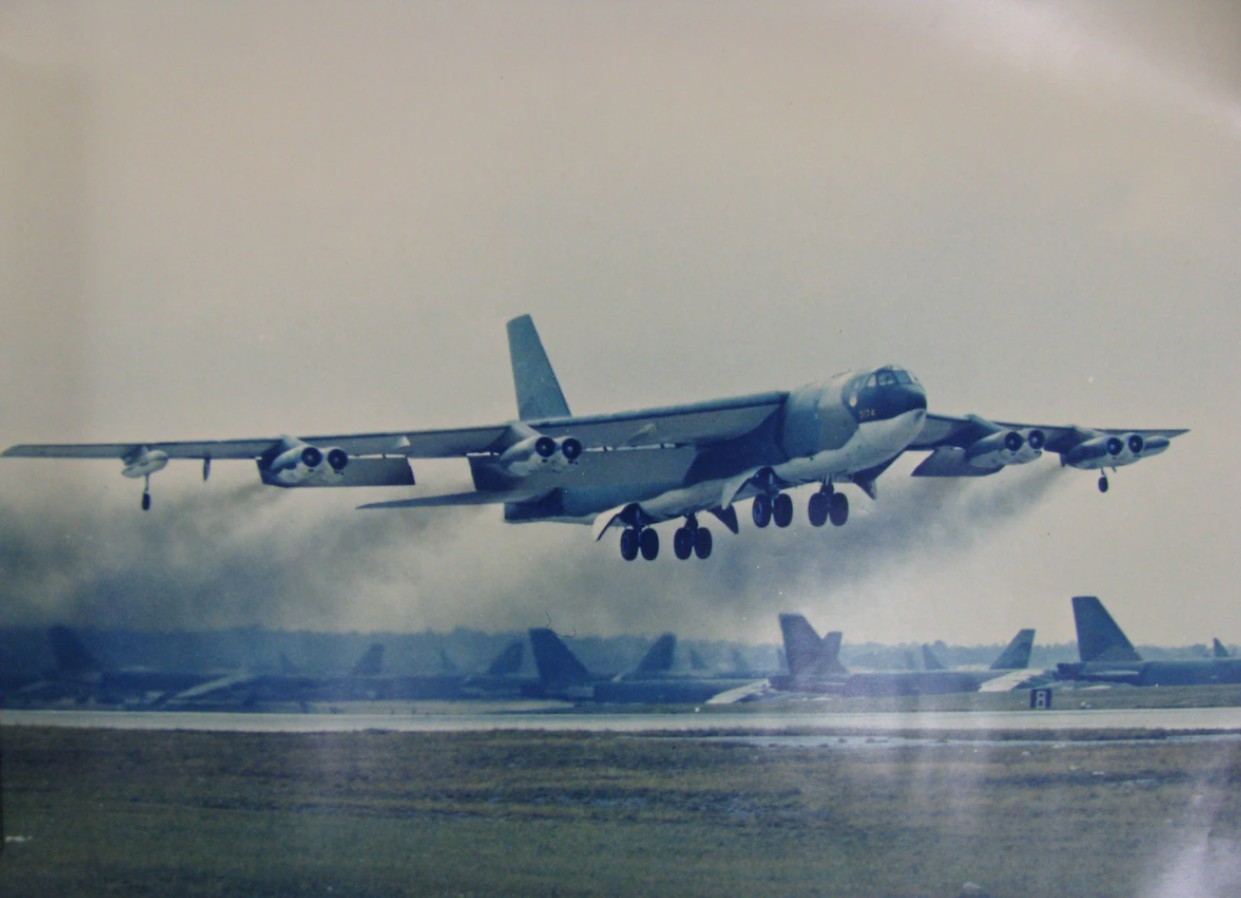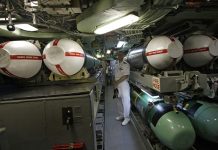Rolls-Royce has released a video providing the first look at the new F130 turbofan engines for the US Air Force’s (USAF’s) B-52 Stratofortress in their dual-pod configuration, which will replace the bomber’s outdated TF33 engines.
In a press release issued on March 1, Rolls-Royce announced that it had launched F130 engine testing under the USAF’s Commercial Engine Replacement Program (CERP) at the company’s outdoor test facility at the NASA Stennis Space Center in Mississippi.
“We are excited to begin this milestone testing program, the first step for what will be decades of successful engine operation for the United States Air Force B-52 fleet,” said Candice Bineyard, director of defense programs at Rolls-Royce.
The CERP is a part of the Pentagon’s $11.8 billion upgrade program for its fleet of B-52 strategic bombers to keep them flying into the 2050s and probably beyond to deter the US’ near-peer adversaries such as China and Russia.
The legendary B-52 Stratofortress nuclear heavy bomber has been a bastion of the US Air Force (USAF’s) bomber fleet since it was first introduced in the 1950s during the height of the Cold War. Seventy-six B-52Hs are still in service, with another 12 in reserve storage.
Rolls-Royce has begun testing F130 engines for the United States Air Force B-52 fleet at the NASA Stennis Space Center https://t.co/qIZpx8gTNE pic.twitter.com/oKaJAGrQnL
— Rolls-Royce Press (@RollsRoycePress) March 1, 2023
Of late, the nearly 70-year-old bomber has begun to show signs of aging, but the USAF remains determined to continue to fly the B-52s for decades to come, and as part of that, the aircraft has been going through continuing reforms to stay viable.
In September 2021, Rolls-Royce North America was selected to supply the replacement jet engines for the Cold War-era B-52 bomber.
The New F130 Engines For B-52 Stratofortress
The current round of evaluations marks the first time the F130 engines have been tested in a dual-pod configuration. The tests will mainly focus on crosswind aerodynamic flow and confirming the successful operation of the engine’s digital controls system.
Rolls-Royce claims that early results from initial tests have been “very positive” and that additional test data collected as the program progresses will be analyzed over the next several months.

The tests come after Boeing completed wind tunnel testing of a 4% scale model of the re-engined B-52 Stratofortress in September last year.
The company then released a corresponding video featuring the model installed inside its transonic wind tunnel. It was subjected to the test at a maximum speed of Mach 0.92.
We predict a windy forecast this #B52sday at #ASC22. ?
The #B52 Commercial Engine Replacement Program completed wind tunnel testing using similar models used by engineers in the 1950s to collect data for future flight tests. This ensures the new engines will work as expected. pic.twitter.com/33JYrx7jbD
— Boeing Defense (@BoeingDefense) September 20, 2022
The new F130 turbofan engines will be housed in the newer and bigger engine nacelles supplied by Spirit AeroSystems. However, the underwing engine pods of the B-52 will remain unchanged.
So, to fit the new nacelles with a larger diameter, they will be positioned closer to the wing than their predecessors.

The B-52’s current Pratt and Whitney-made TF33 turbofan engines have powered the bomber since its oldest airframes entered service in the 1960s.
However, in recent years the TF33s have been a significant factor behind the growing cost and complexity of maintaining the B-52 fleet. The engines need an overhaul after every 6,000 flight hours, which according to an estimate in 2016, costs the USAF $2 million per engine.
Also, the serial production of TF33 engines was halted in 1985, and therefore the existing TF33s are not expected to be supportable past 2030.
The new Rolls-Royce F130, however, is expected to extend the bomber’s service life by 30 years and remain on-wing throughout the duration, according to the company.
Reports suggest the F130s will offer the B-52 greater fuel efficiency, increased range, better field performance, enhanced reliability, and reduced tanker aircraft requirements compared to the TF33.
It is unclear how the F130 will impact the bomber’s speed, but according to a report by Air and Space Forces Magazine in March 2022, the new engine is not expected to influence performance negatively.
The engines will eventually be manufactured at Rolls-Royce’s largest US-based production facility in Indianapolis.
The contract between the USAF and Rolls-Royce outlines an initial $500 million six-year deal which could rise to $2.6 billion if all options are exercised. The company would produce 608 F130 engines to replace all eight TF33 engines on the 76 B-52Hs and 42 spare units.
Adding new F130 engines to the B-52Hs is one of the most significant upgrades these aircraft have received and will enable the USAF to keep flying the bombers through 2050 — roughly 100 years after the first B-52 was flown.

Other Upgrades To B-52 Bomber
Apart from the new F130 engines, the B-52 will also undergo the Radar Modernization Program. The Cold War-era bomber will receive a new, more capable Raytheon AN/APG-79 radar used by the US Navy’s F/A-18E/F Super Hornets.
As reported by EurAsian Times, the Raytheon AN/APG-79 AESA radar will involve changes to the B-52’s cooling systems, for which the radar will be placed upside down, unlike the Super Hornet’s vertical posture, allowing it to scan the ground.

The “fighter-quality” radar will provide the B-52 with excellent air-to-ground detection, range, tracking, and precise weapons delivery and fire-control capability.
While the engine and radar replacement are certainly critical upgrades for the B-52, the USAF is also engaged in efforts to add systems and subsystems that will enhance the capability of this strategic bomber.
This includes the service’s plan to replace the Global Iridium Bomber Set (GLIBS), which has been in operation since 2017, with the new IRIS system, as discussed in a previous report by EurAsian Times.
The IRIS is a new beyond-line-of-sight communication (BLOS) system and Air Force Global Strike Command’s (AFGSC) solution for integrating the B-52 fleet into the greater Joint All-Domain Command and Control problem set.
It offers complete global coverage by leveraging the Low Earth Orbit (LEO) Iridium NEXT satellite constellation.
B-52 To Fly For A Century
Despite its age, the B-52 remains the USAF’s leading strategic nuclear and conventional weapons platform. It can carry more weapons than any other USAF jet and fly long-range missions from bases in the Pacific.
Therefore, these bombers are deployed widely by the USAF for various missions despite having the B-1 Lancer and the B-2 Spirit in their inventory.

The bomber can fly at high subsonic speeds at altitudes of up to 50,000 feet (15,166.6 meters) and carry 32,000 kilograms of nuclear or conventional weapons with top-class precision navigation capability.
While the B-52 does not possess the advanced stealth features such as that of the USAF’s underdevelopment B-21 Raider, it can fire new hypersonic weapons that the service plans to field by 2027, which is essential considering the B-21 will not enter service before 2030.
The first group of modified B-52s is expected to be delivered by the end of 2028.
- Contact the author at tanmaykadam700@gmail.com
- Follow EurAsian Times on Google News




